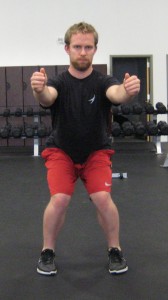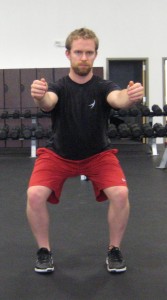A couple weeks ago I posted a video on HockeyStrengthandConditioning.com with two “Reactive Jumping” (or plyometric) exercises that we’ve used with our hockey players. These are two jumps that you’re likely familiar with (I have picture breakdowns of both in my Off-Ice Performance Training Course), but this execution is relatively novel, at least to most youth hockey audiences.
Where I go to talk shop with the top hockey strength and conditioning coaches in the world!
Plyometric exercises can be used to serve a number of different purposes. For example, performing a vertical jump after pausing for a couple seconds in the bottom of a squat position will help develop position specific rate of force development or “starting strength”. In contrast, performing a vertical jump in the typical fashion by starting tall and dropping down into a squat position and then exploding upward will integrate the stretch reflex and stretch shortening cycles to a great degree. This is just one example of how the same exercise can be manipulated to create a different response.
In addition to using different variations to create different responses, it’s important to recognize that some are more advanced and may not be appropriate for all populations. There are fundamental patterns that athletes need to master before diving in to advanced options, even if they could technically benefit from the intended response of the exercise. With that in mind, here’s a sample progression to teach youth athletes how to perform a vertical jump properly.
This is certainly not the only way to go about reaching this end-goal. Regardless of the path taken, the principles should remain relatively synonymous:

If jump landings look like this, the athlete isn’t ready to progress to more advanced variations or higher volumes.

Green light.
Naturally, athletes shouldn’t progress to the next level until they can demonstrate CONSISTENT proficiency in the previous level. While I think 1&2 can be accomplished in parallel, it’s nonsensical and irresponsible to encourage athletes to jump higher, further, or more if they can’t jump properly.
Log in to HockeySC.com and check out the reactive jumping video, as well as a ton of other exercise videos from Mike Potenza, Sean Skahan, and Darryl Nelson!
To your success,
Kevin Neeld
P.S. If you train youth players without any equipment, check this out: Off-Ice Performance Training Course
Please enter your first name and email below to sign up for my FREE Athletic Development and Hockey Training Newsletter!